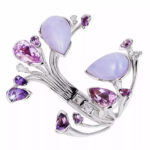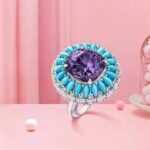Today, we unveil two brands that excel in storytelling through jewelry. For many jewelry collectors, a piece is not merely a decorative item with investment value.
It often records unique experiences, beautiful emotions, and life insights, even becoming a legacy of love and blessings passed down through generations. For these collectors, the emotional value of jewelry outweighs its material worth.
The designer brand Bianzi and the antique jewelry brand Prince Andrea, both participating in this exhibition, are likely to bring more emotionally valuable, story-rich jewelry pieces to everyone.
Bianzi Jewelry
Depicting “Painted Realms” Through Jewelry
Jewelry designer Bianzi studied fine arts from a young age and excels at combining the beauty found in everyday life with traditional Chinese patterns. She believes these symbolic design languages are rooted in the most traditional Chinese aesthetic system and can resonate with it.
She cleverly simplifies traditional patterns to make her works easier to integrate with modern wardrobes. She also combines ancient Chinese jade with various gemstones, enhancing their versatility through more modern designs. She firmly believes that jewelry should be suitable for everyone and should shine in any occasion.
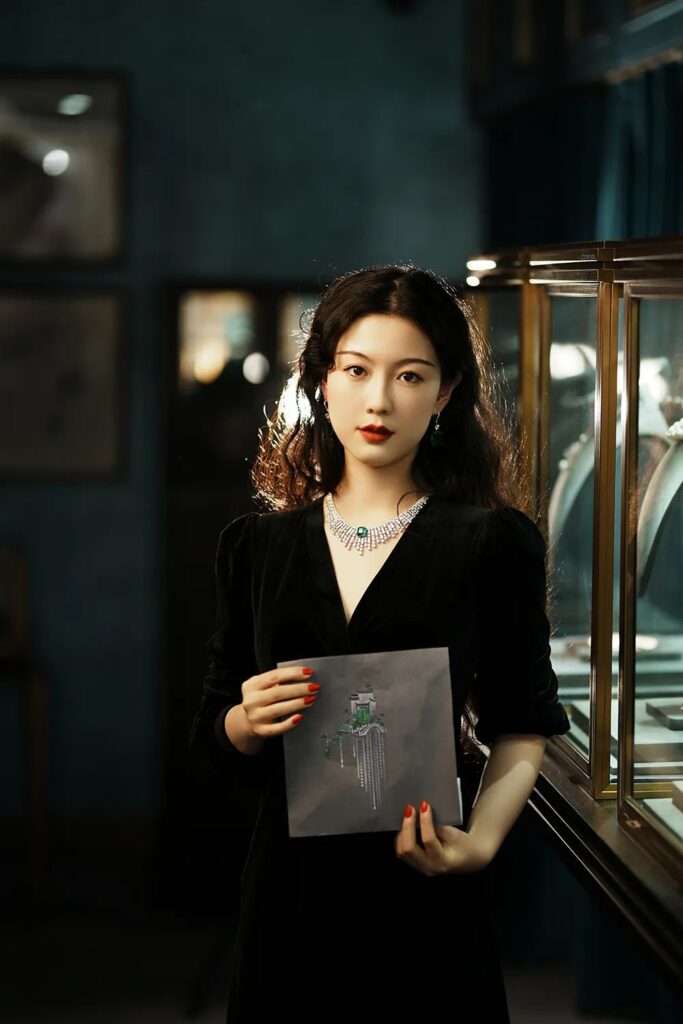
Bianzi is adept at using jewelry to describe her “painted realms,” so her works always unfold like gradually revealed scrolls. For instance, the “Jiangnan” series is inspired by the traditional Chinese architectural style of “Hui-style horse-head walls.” In the misty rain, black upturned eaves and mottled white walls stretch between the green smoke and willow trees.
Bianzi chose black and white Hetian jade as the main stone, its natural texture perfectly showcasing the characteristics of Hui-style architecture. She used emeralds as accents, representing the evergreen scenery of Jiangnan, and added delicate diamond tassels. Together, these elements narrate the story of the misty Jiangnan, where “smoke and willows paint the bridge, wind curtains and green screens, ten thousand homes in varying heights.”
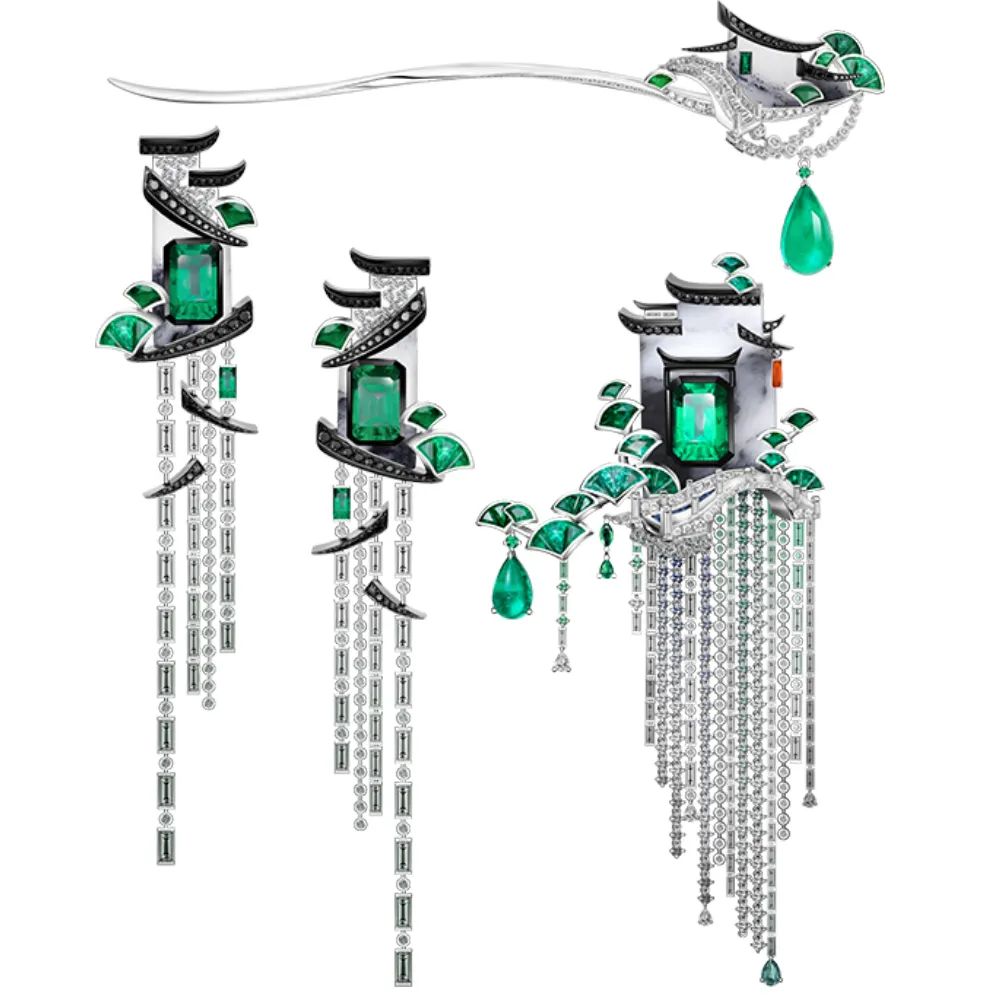
“Jiangnan” series jewelry
Hetian jade, emerald, diamond
The “China Pavilion” ring draws inspiration from the distinctive feature of Chinese architecture – the dougong bracket system. However, Bianzi chose to present this layered architectural beauty using minimalist lines. She cleverly encases the emerald in an openwork design, allowing the ring to display completely different aesthetics when viewed from the front or side.

“China Pavilion” ring
Emerald, diamond
The “Waltz” series is inspired by the spinning, blooming skirts of ballet dancers. The intersecting fan shapes resemble layers of luxurious dance skirts, with full and soft curves showcasing feminine grace. The airy lace-like feel and the small bead-set design maintain a sense of lightness despite the grand visual impact.
It’s the perfect interpretation of contemporary female power – even when shouldering multiple roles, women can still dance with elegance and abandon.
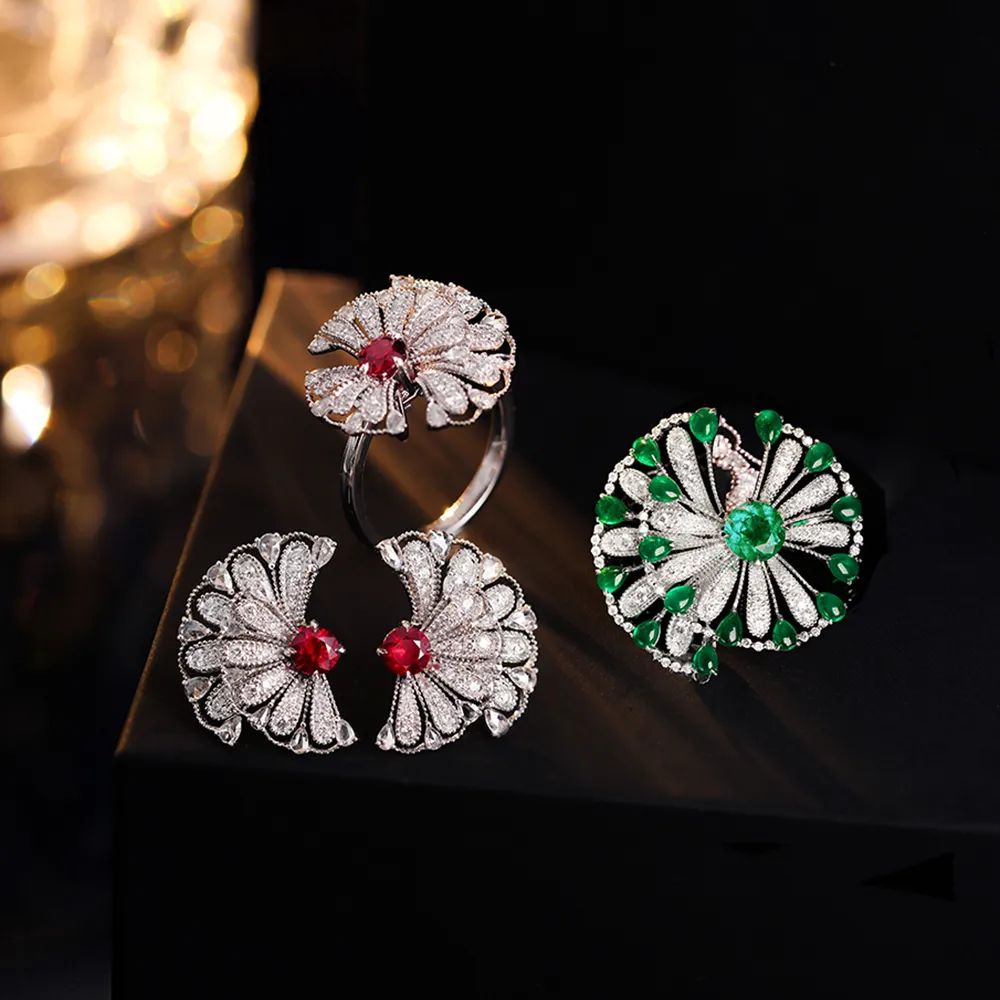
“Waltz” series
Diamond, ruby, emerald
The “Coral Flower” brooch features a hand-carved coral peony with naturally spread petals. The designer chose emeralds, black opals, and diamonds to surround and support it, using the grand peony and luxurious gemstones to depict the colorful prosperity of the capital.
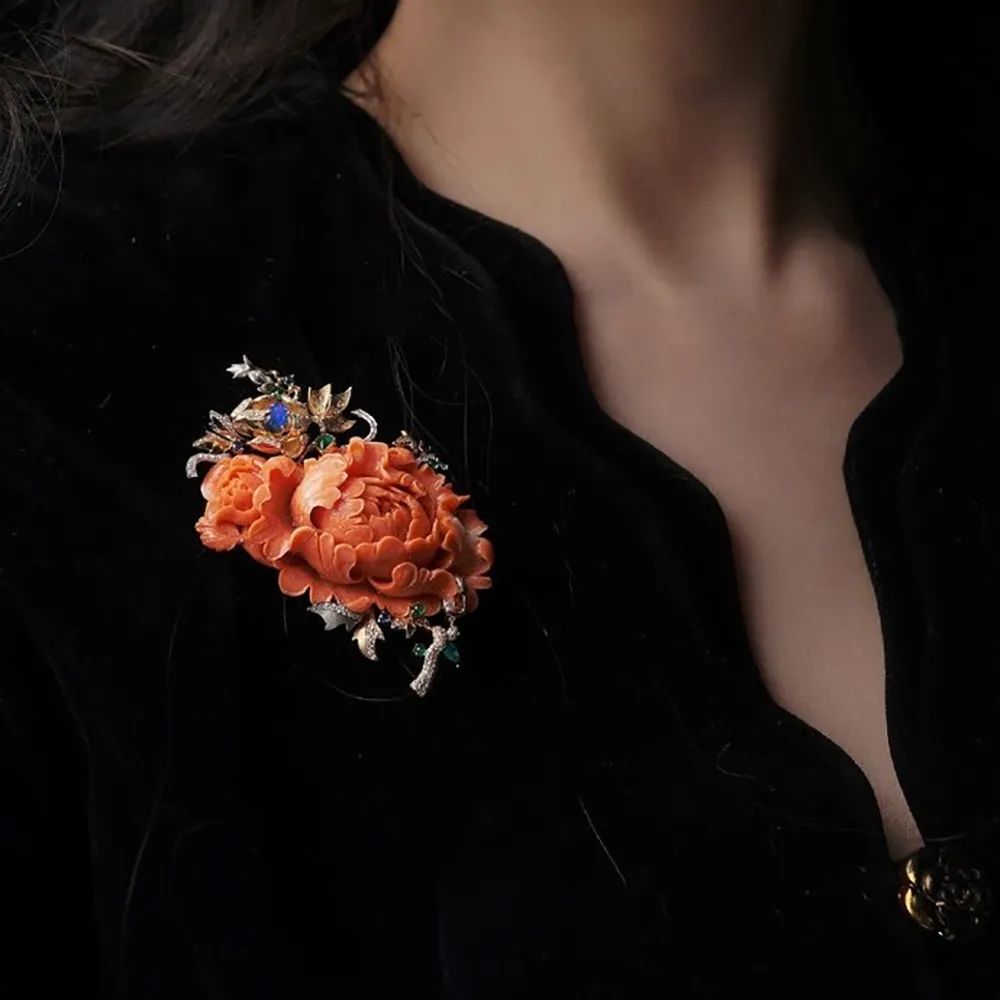
“Coral Flower” brooch
Coral, emerald, black opal, diamond
After seeing the rose window of a Gothic cathedral, Bianzi was struck by its intricate beauty and used it as inspiration to design a vintage-style sapphire ring. The combination of diamonds and sapphires creates a quiet and cool elegance.
The double halo setting and small bead separations bring the delicacy of the rose window, while adding a touch of rationality to the romantic design. The exquisite cutting allows the gemstones to reflect dreamlike beauty under any light.
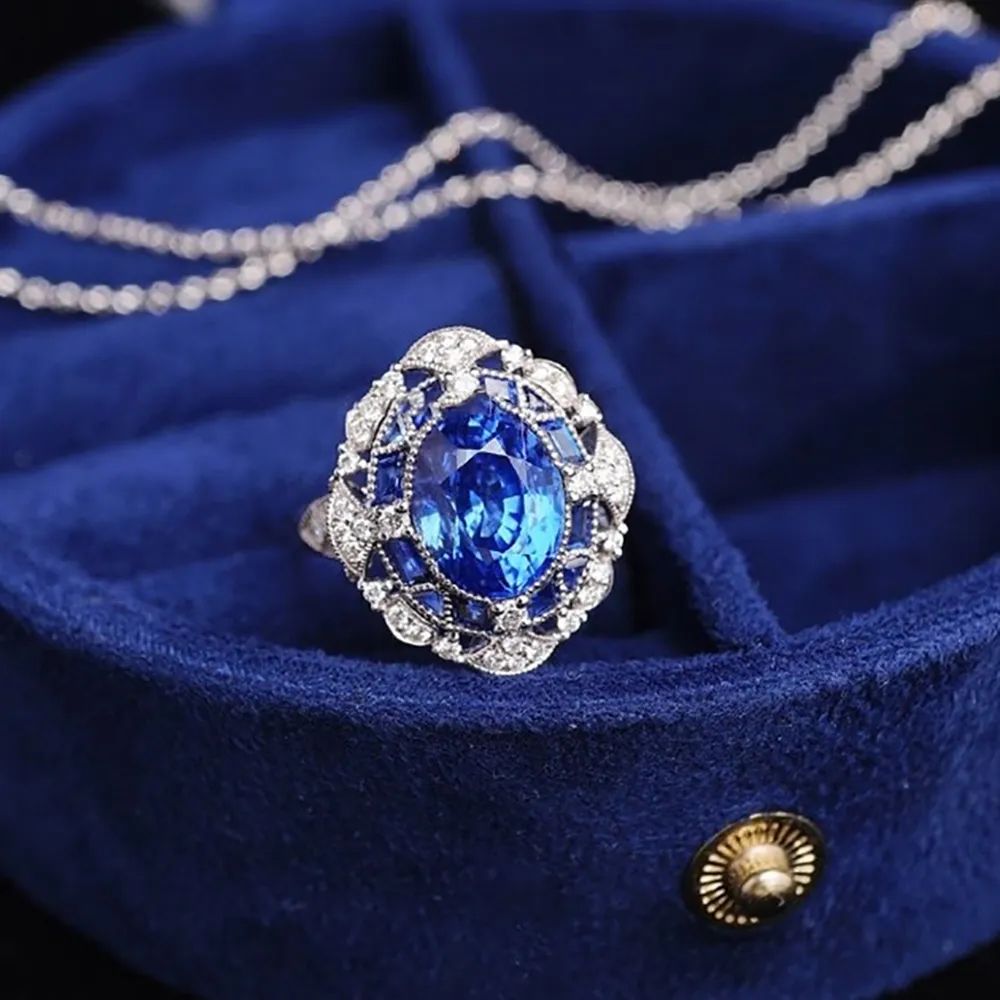
Vintage sapphire ring
Diamond, sapphire
Prince Andrea Collection
Curating the Beauty of Eras
Chinese jewelry designer Ming Cheng met Italian jewelry collector Andrea Aliperti, an encounter that changed both their life trajectories and led to the creation of the antique jewelry brand Prince Andrea. They meticulously select each period piece based on their professional aesthetic judgment.
The European antique jewelry and vintage pieces from major brands they present are distinctly representative, featuring craftsmanship, gemstones, and styles characteristic of their eras, while also telling legendary stories from those times.
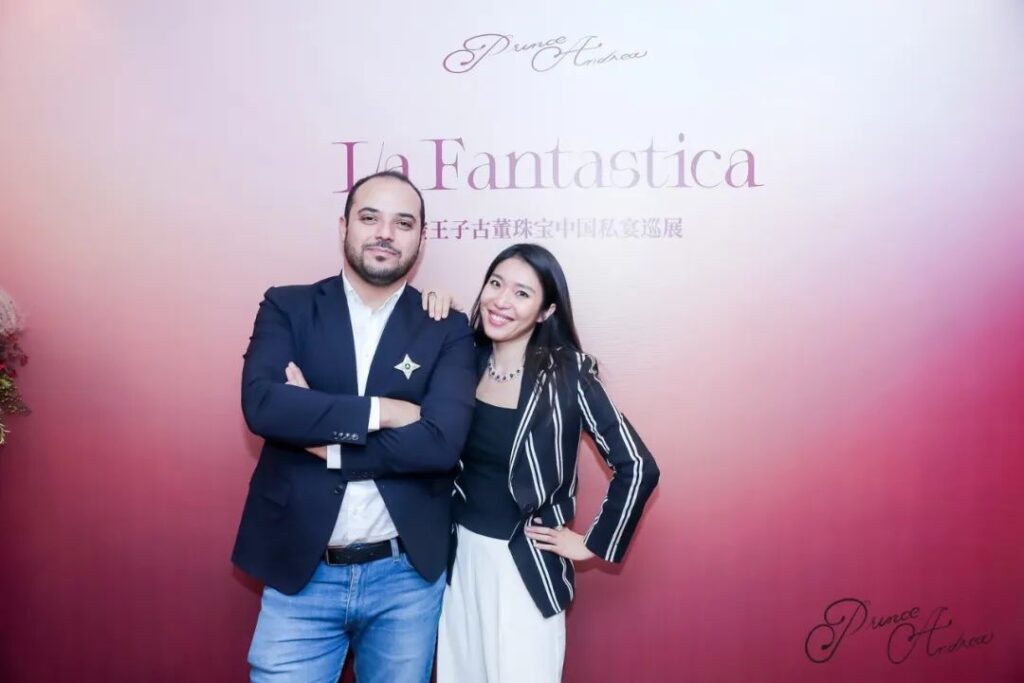
Ming Cheng and Andrea Aliperti
For example, their collection includes a Belle Époque style antique diamond and pearl necklace from 1910. The diamond-crafted floral disc pendant showcases the representative design and craftsmanship of that era – light and delicate, adorned with a romantic bow on top. Both the platinum and diamond pendant section and the hand-woven wild pearl necklace exemplify the typical materials and techniques of that period.

Prince Andrea Collection
They also have a multi-functional platinum diamond necklace from the 1940s, which deeply embodies the style characteristics of its era. During the popularity of the “Retro Style,” jewelry set designs were no longer mainstream.
Jewelry had transitioned from being exclusive to royalty and nobility to becoming accessible to more households. Wearing occasions were no longer limited to formal dinners paired with evening gowns but expanded to various scenarios.
Therefore, jewelry from this period emphasized functional design and bold styles. The former increased its “appearance rate” and adaptability, while the latter ensured that even wearing a single piece of jewelry could instantly catch the eye.
This necklace in Prince Andrea’s collection is a representative work of “Retro Style” jewelry. It can be disassembled and worn as a bracelet or brooch, and its minimalist, three-dimensional design ensures its versatility and eye-catching quality.
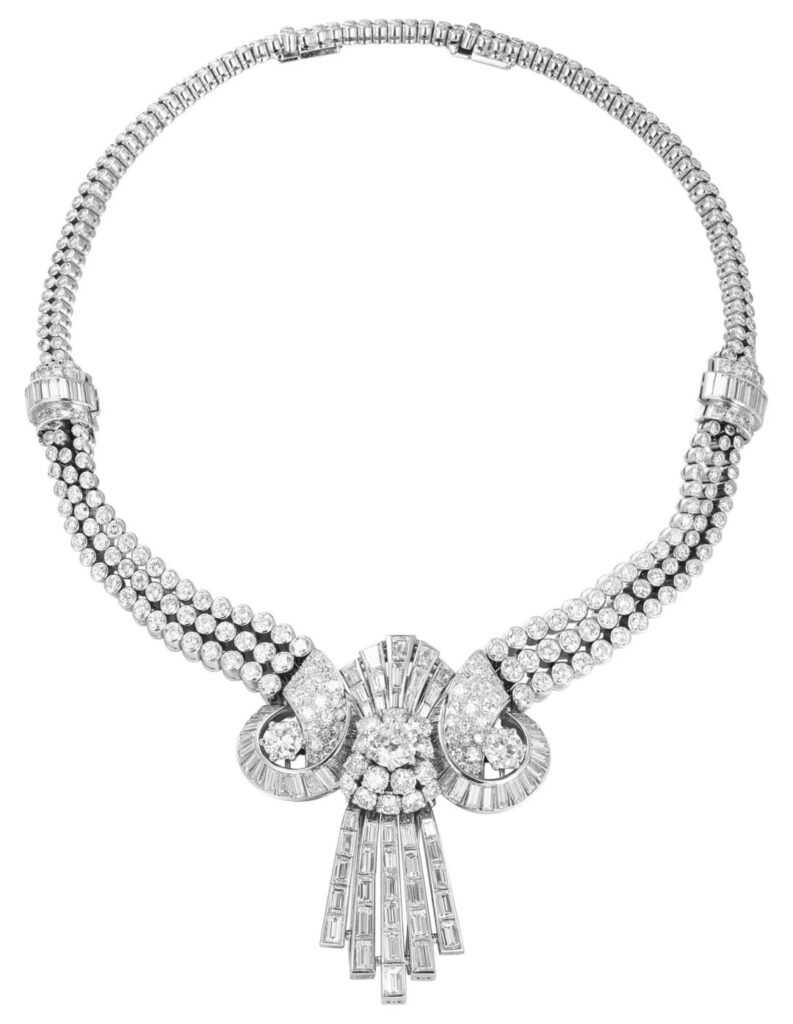
Prince Andrea Collection
Interestingly, possibly because brand curator Andrea Aliperti is from Italy, Prince Andrea has a special fondness for jewelry with Italian characteristics. As we all know, one of Italy’s proudest crafts is gold craftsmanship, with Buccellati being a leader in this field. Therefore, Prince Andrea has maintained a continuous focus on this brand, collecting representative works from two generations of the Buccellati family leaders.
First is this bracelet created by brand founder Mario Buccellati, showcasing Buccellati’s signature Rigato technique. It carves a silk-like luxurious texture on white gold, inlaid with Burmese rubies and diamonds. The layering is delicate, with a strong three-dimensional effect, making it a rare collector’s item.

18K gold, ruby, diamond
Prince Andrea Collection
Another bracelet also from Mario Buccellati demonstrates the Modellato carving technique, another Buccellati specialty. This technique can imitate the goldwork of plant veins, creating a three-dimensional effect of lace high relief, with lifelike posture and texture.

1940-1950s
18K gold, pearl
Prince Andrea Collection
Prince Andrea also collected representative works from Gianmaria Buccellati, the second-generation leader of Buccellati. Gianmaria is Mario’s son and apprentice, professionally trained in the workshop from a young age. This grape vine set he created in the 1980s shows a more delicate and refined style compared to his father’s grand and flamboyant approach.
The grape vines crafted with the Modellato carving technique are very small, complementing the sapphire bead grapes, almost indistinguishable from real ones.
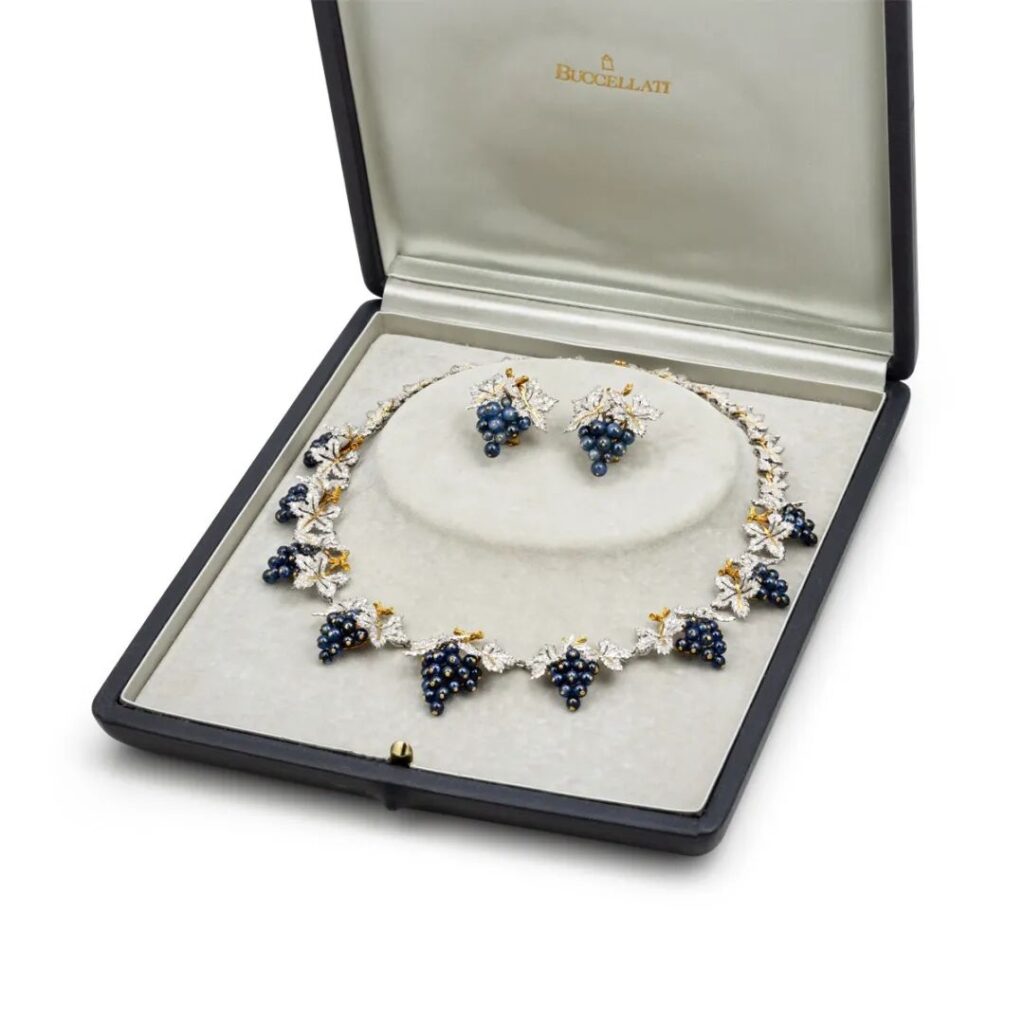
1980s
18K gold, sapphire, diamond
Prince Andrea Collection
Bianzi Jewelry vs. Prince Andrea: Weaving Tales Through Gemstones
Tweet
